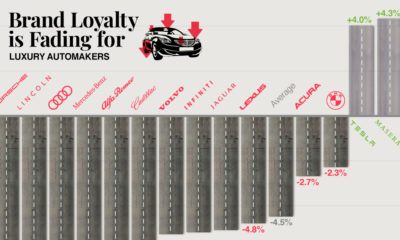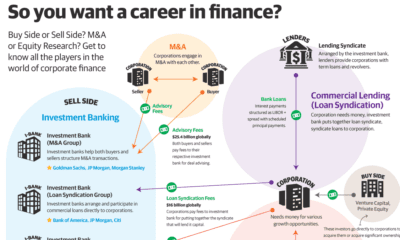Building an enduring business isn’t easy work. It can take decades to earn trust and respect in a given market, and it only takes one terrible miscue to unravel all of that goodwill. As a result, it’s no surprise that the world’s best CEOs think a lot about evaluating these kinds of risks. So what do executives see as being the biggest reputational risks lingering over the next 12 months for their businesses?
Risky Business
Today’s infographic comes to us from Raconteur, and it breaks down the near-term reputational risks seen by CEOs as based on research by Deloitte. The concerns highlighted in the survey fall into three major categories: Let’s dive a little deeper, to see why these broad areas are such a concern.
Security Risks
As more people work remotely, CEOs see a rising risk stemming from data breaches. Although 89% of the C-suite believes that employees will do everything they can do to safeguard information, about 22% say their employees aren’t aware of offsite data policies. The devices most at risk, according to this group, are company mobile phones (50%), company laptops (45%) and USB storage devices (41%).
Supply Chain Risk
When it comes to maintaining the quality of your product or service, it’s not optimal to be reliant on third-parties. However, it’s also unlikely for companies to be fully vertically integrated – somewhere along the way, you need to get raw materials from a supplier, or you need to rely on a logistics company to deliver your goods to market. The more borders that need to be crossed, and the further an item has to go, the more complicated it all gets. In terms of supply chain risk, CEOs are mostly concerned about government action (or inaction): uncertainty about policy, over-regulation, trade conflicts, geopolitical uncertainty, and protectionism were all items that registered high on the list.
Crisis Management
It pays to be prepared when it comes to crises. The only problem? It would seem the data that C-level execs need to make emergency decisions is not up to snuff. For example, 95% of CEOs see customer and client data as being necessary in such a situation, but only 15% of companies are successfully collecting such data. The same gap seems to occur when it comes to other types of data, including brand reputation data, financial forecasts and projections, employee needs and views, industry peer benchmarking, and supply chain data. on Last year, stock and bond returns tumbled after the Federal Reserve hiked interest rates at the fastest speed in 40 years. It was the first time in decades that both asset classes posted negative annual investment returns in tandem. Over four decades, this has happened 2.4% of the time across any 12-month rolling period. To look at how various stock and bond asset allocations have performed over history—and their broader correlations—the above graphic charts their best, worst, and average returns, using data from Vanguard.
How Has Asset Allocation Impacted Returns?
Based on data between 1926 and 2019, the table below looks at the spectrum of market returns of different asset allocations:
We can see that a portfolio made entirely of stocks returned 10.3% on average, the highest across all asset allocations. Of course, this came with wider return variance, hitting an annual low of -43% and a high of 54%.
A traditional 60/40 portfolio—which has lost its luster in recent years as low interest rates have led to lower bond returns—saw an average historical return of 8.8%. As interest rates have climbed in recent years, this may widen its appeal once again as bond returns may rise.
Meanwhile, a 100% bond portfolio averaged 5.3% in annual returns over the period. Bonds typically serve as a hedge against portfolio losses thanks to their typically negative historical correlation to stocks.
A Closer Look at Historical Correlations
To understand how 2022 was an outlier in terms of asset correlations we can look at the graphic below:
The last time stocks and bonds moved together in a negative direction was in 1969. At the time, inflation was accelerating and the Fed was hiking interest rates to cool rising costs. In fact, historically, when inflation surges, stocks and bonds have often moved in similar directions. Underscoring this divergence is real interest rate volatility. When real interest rates are a driving force in the market, as we have seen in the last year, it hurts both stock and bond returns. This is because higher interest rates can reduce the future cash flows of these investments. Adding another layer is the level of risk appetite among investors. When the economic outlook is uncertain and interest rate volatility is high, investors are more likely to take risk off their portfolios and demand higher returns for taking on higher risk. This can push down equity and bond prices. On the other hand, if the economic outlook is positive, investors may be willing to take on more risk, in turn potentially boosting equity prices.
Current Investment Returns in Context
Today, financial markets are seeing sharp swings as the ripple effects of higher interest rates are sinking in. For investors, historical data provides insight on long-term asset allocation trends. Over the last century, cycles of high interest rates have come and gone. Both equity and bond investment returns have been resilient for investors who stay the course.













